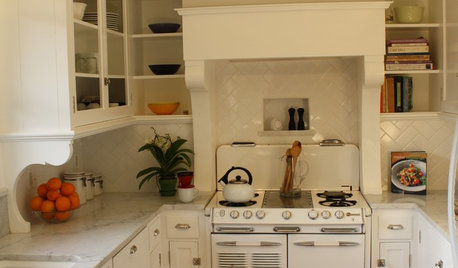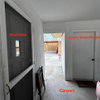Whose problem is it if dishwasher won't fit after remodel?
Calrissian34
9 years ago
Featured Answer
Comments (14)
_sophiewheeler
10 years agoannzgw
10 years agoRelated Professionals
Montrose Kitchen & Bathroom Designers · Saint Helens Kitchen & Bathroom Remodelers · Clinton Township Interior Designers & Decorators · Nashville Interior Designers & Decorators · View Park-Windsor Hills Interior Designers & Decorators · Bloomington General Contractors · Country Club Hills General Contractors · El Monte General Contractors · Fredonia General Contractors · Meadville General Contractors · Millbrae General Contractors · Renton General Contractors · Saint Paul General Contractors · West Melbourne General Contractors · Westchester General Contractorsaidan_m
10 years agosnoonyb
10 years agoCalrissian34
10 years agoannzgw
10 years ago_sophiewheeler
10 years agoCalrissian34
10 years ago_sophiewheeler
10 years agomillworkman
10 years agomag77
10 years agoCalrissian34
10 years agoJoseph Corlett, LLC
10 years ago
Related Stories

SMALL SPACES10 Tiny Kitchens Whose Usefulness You Won't Believe
Ingenious solutions from simple tricks to high design make this roundup of small kitchens an inspiring sight to see
Full Story
REMODELING GUIDESYou Won't Believe What These Homeowners Found in Their Walls
From the banal to the downright bizarre, these uncovered artifacts may get you wondering what may be hidden in your own home
Full Story
MORE ROOMSWhere to Put the TV When the Wall Won't Work
See the 3 Things You'll Need to Float Your TV Away From the Wall
Full Story
SMALL KITCHENS10 Things You Didn't Think Would Fit in a Small Kitchen
Don't assume you have to do without those windows, that island, a home office space, your prized collections or an eat-in nook
Full Story
HOME TECH3 Kitchen Contraptions You Won’t Believe
Pizza hot from the printer, anyone? These cooking gadgets harness imagination and high tech — and have price tags to match
Full Story
REMODELING GUIDESThe Hidden Problems in Old Houses
Before snatching up an old home, get to know what you’re in for by understanding the potential horrors that lurk below the surface
Full Story
DISASTER PREP & RECOVERYRemodeling After Water Damage: Tips From a Homeowner Who Did It
Learn the crucial steps and coping mechanisms that can help when flooding strikes your home
Full Story
HOUSEKEEPINGDishwasher vs. Hand-Washing Debate Finally Solved — Sort Of
Readers in 8 countries weigh in on whether an appliance saves time, water and sanity or if washing by hand is the only saving grace
Full Story
ECLECTIC HOMESHouzz Tour: Problem Solving on a Sloped Lot in Austin
A tricky lot and a big oak tree make building a family’s new home a Texas-size adventure
Full Story
MY HOUZZMy Houzz: Once-Bare Seattle Yard Now Fit for a Wedding
DIY patience pays off for an interior designer and a contractor who transformed their landscape for the party of their lives
Full StorySponsored
Columbus Design-Build, Kitchen & Bath Remodeling, Historic Renovations
More Discussions









Bruce in Northern Virginia